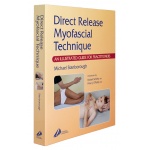-
Michael Stanborough, M.A. (Communication Theory, Victoria University), is the director of the Stanborough Educational Group. He has practiced Structural Integration (Rolfing®) for the past 30 years and was a full instructor at the Rolf® Institute in Boulder, Colorado. He was the first Australian to be certified to teach by the Rolf® Institute. He now teaches Structural Integration within his own sch
Stanborough Educational Group - Training Course, Book and DVD Sales, Private Clinic
The Vagus Nerve: From Animal Spirits to Poly Vagal Theory
This article traces the development of our understanding of the ANS and the vagus nerve in particular, from the Greeks, to the modern era of Gellhorn, Selyes, Levine and Porges. It will appear in the September issue of Advanced Clinical Education
The notion that the body was fundamentally divided into two systems, an animal (somatic) and organic (autonomic) originated with the ancient Greeks. (Clarke E, 1987). In the second century AD, Galen was able to follow the vagus nerve from the cranium, exiting the jugular foramina and travelling to the organs. (Clarke E, 1987)The Latin word vagus means wandering or rambling which is the type of journey the two branches of that nerve make through the thoracic and abdominal cavities. Galen also identified the sympathetic trunks as crossing the ribs and communicating with the organs via plexuses. He was able to identify most of the cranial nerves but incorrectly grouped the glossopharyngeal, vagus and accessory nerves within the sympathetic trunk, his sixth cranial nerve. Galen saw the nerves as pipes, allowing “animal spirits” to pass between the organs, a process he termed “sympathy”. (Webber, 1978)
Effectiveness of Myofascial Release in the Management of Lateral Epicondylitis in Computer Professionals
Dr M.S. Ajimsha (PhD Physiotherapy) and colleagues conducted a study on the effectiveness of myofascial release in lateral epicondylitis. The author acknowledged the techniques were in part based on those shown in Michael's book Direct Release Myofascial Technique. This study provides evidence the MFR is more effective than a control intervention for lateral epicondylitis in computer professionals. To see a more detailed description see: Archives of Physical Medicine and Rehabilitation.
Objective
To investigate whether myofascial release (MFR) reduces the pain and functional disability of lateral epicondylitis (LE) in comparison with a control group receiving sham ultrasound therapy in computer professionals.









